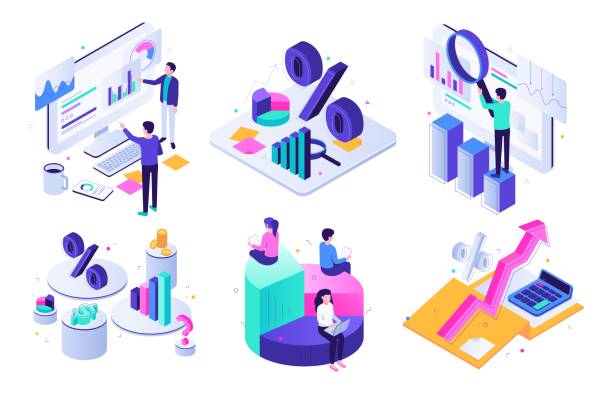As we move into 2024, there’s no doubt that digital marketing will continue to evolve. And with the pandemic still raging on, businesses have to be more strategic than ever to stay ahead of the curve. So, what can we expect in the world of B2B digital marketing? We’ve compiled a list of 15 expert-backed predictions for the upcoming year so that you can stay ahead of the game. From voice search to AI-powered content and more, read on for a glimpse into the future of B2B digital marketing.
Table of Contents
SEO
SEO is always changing, and it can be hard to keep up with the latest trends. But if you want your business to be visible online, it’s important to stay on top of the latest SEO trends. Here are some of the most important SEO trends for 2024:
1. Mobile-first indexing: With more people than ever using mobile devices to access the internet, Google is now prioritizing mobile-friendly websites in its search results. This means that if your website isn’t optimized for mobile devices, it could be pushed down in the search results.
2. Voice search: Voice search is becoming more popular, as people are using voice assistants like Siri and Alexa to perform searches. This means that businesses need to optimize their content for voice search by using natural language and long-tail keywords.
3. RankBrain: RankBrain is Google’s artificial intelligence system that ranks websites in the search results based on user engagement. To make sure your website ranks well with RankBrain, focus on creating high-quality content that engages users and encourages them to spend time on your site.
4. Schema markup: Schema markup is a code that you can add to your website to help search engines understand your content better. Using schema markup can help your website show up in richer results, like featured snippets and Knowledge Graph cards.
5. Local SEO: Local SEO is becoming more important as people use the internet to find local businesses. If you want your business to show up in local search results, make sure your website is optimized for local keywords and that your business is listed in local directories.
6. User experience: User experience is becoming increasingly important for SEO. This means that your website needs to be easy to use and navigate, and it should provide a good user experience on all devices.
7. AMP pages: AMP (accelerated mobile pages) are pages that are designed to load quickly on mobile devices. Google has said that it gives preference to AMP pages in the mobile search results, so if you want your website to rank well on mobile, you need to have AMP pages.
8. HTTPS: HTTPS is a security protocol that encrypts data between your website and the user’s browser. Google has said that HTTPS is a ranking factor, so if you want your website to rank well, you need to switch from HTTP to HTTPS.
9. Content: Content is still king when it comes to SEO. To make sure your content ranks well in the search results, focus on creating high-quality, keyword-rich content that provides value to users.
10. Links: Links are still an important ranking factor for SEO. To get high-quality links, focus on creating great content that other websites will want to link to.
Content Marketing
Content marketing is the process of creating and distributing relevant and valuable content to attract, acquire, and engage a clearly defined and understood target audience. This is to drive profitable customer action.
The process is an ongoing one that is best integrated into your overall marketing strategy, and it emphasizes owning media rather than renting it.
The first step is to identify what kind of content will be most effective in achieving your business goals. Once you know what you want to achieve, you can develop a content strategy that includes objectives, personas, topics, keywords, and an editorial calendar.
Your content should be interesting and engaging, but it also needs to be helpful and informative. It should answer the questions your target audience is asking, and address their pain points.
Remember that not all content has to be original – curating relevant content from other sources can also be effective. But whatever content you use, make sure it’s high-quality and adds value for your audience.
Finally, don’t forget to promote your content! Share it on social media, email it to your list, and include it in your blog posts… get creative! The more people who see it, the more likely you are to achieve your desired results.
Social Media Marketing
As the use of social media has grown in recent years, so has its importance as a marketing tool. Businesses of all sizes are using social media to connect with customers and promote their products or services.
There are many different social media platforms, each with its unique features and audience. Some of the most popular platforms include Facebook, Twitter, Instagram, LinkedIn, and Pinterest.
When used effectively, social media can be a powerful way to reach out to potential and current customers. It can help you build relationships, create brand awareness, and drive traffic to your website or store.
To get started with social media marketing, you’ll need to create accounts on the different platforms you want to use. Once you have set up your accounts, take some time to familiarize yourself with how each platform works. Then start creating and sharing content that is relevant to your business and your target audience
Email Marketing
Email marketing is one of the most effective digital marketing tools available. It allows businesses to reach a large audience with relatively little effort. Email marketing can be used to promote sales, special offers, and other important information to potential and existing customers.
When done effectively, email marketing can be a powerful tool for driving business growth. However, it’s important to keep up with the latest trends to make the most of this channel. Here are some of the top email marketing trends for 2024:
1. Personalization
One of the best ways to improve your email marketing is to personalize your messages. This means addressing your recipients by name, tailoring your content to their interests, and including relevant images and videos.
2. Interactive Content
Interactive content is one of the most effective ways to engage your audience. Include quizzes, polls, surveys, and other types of interactive content in your emails to encourage your subscribers to interact with your message.
3. Mobile-Friendly Emails
With more people than ever using their mobile devices to check their email, it’s important to make sure your messages are optimized for small screens. This means using a responsive design and keeping your images and videos small enough to load quickly on mobile devices.
4. Automation
Email automation can save you a lot of time and effort while also improving the effectiveness of your campaigns. Automate welcome messages, birthday greetings, and other common types of emails to free up your time for other tasks.
5. A/B Testing
A/B testing is a great way to improve the performance of your email marketing campaigns. Test different subject lines, call-to-action buttons, and email content to see what works best with your audience.
Lead Generation
Companies are always looking for new leads, and several digital marketing trends can help with lead generation. One trend is content marketing. Creating high-quality content that is targeted to your ideal customer can help to generate leads. Another trend is social media marketing. Using social media platforms to connect with potential customers and create relationships can also lead to generating new leads. These are just a few of the digital marketing trends that can help with lead generation.

Mobile Marketing
Mobile marketing is becoming increasingly important as more and more people use their phones to access the internet. It is important to make sure that your website is mobile-friendly and that your marketing campaigns are designed with mobile users in mind.
Here are some tips for effective mobile marketing:
1. Make sure your website is responsive – this means it will adjust to fit any screen size.
2. Use SMS marketing – this allows you to send text messages directly to potential customers.
3. Use apps – create an app for your business or take advantage of existing ones (such as Snapchat) to reach a wider audience.
4. Take advantage of social media – create engaging content that can be easily shared on social media platforms such as Facebook, Twitter, and Instagram.
5. Use location-based targeting – this allows you to deliver relevant content and ads based on the user’s location.
Account-Based Marketing
What is account-based marketing (ABM)?
ABM is a targeted approach to marketing, in which an organization identifies and pursues key accounts with the aim of driving revenue growth. In an ABM program, each account is treated as a market of one, with tailored campaigns designed to address the specific needs and challenges of that account.
ABM has traditionally been used by B2B organizations, but it is also gaining popularity in the B2C space. ABM programs are built on a deep understanding of the customer, including their business goals, pain points, and buying journey. This understanding allows marketers to develop highly personalized campaigns that address the unique needs of each account.
The key to successful ABM is aligning your marketing efforts with your sales team. This alignment ensures that everyone is working towards the same goal: generating more revenue from key accounts.
When done well, ABM can be an extremely effective way to drive growth for your business. If you’re considering implementing an ABM program, there are a few things you should keep in mind:
1. Define your target accounts: The first step in any ABM program is to identify the accounts you want to target. To do this, you’ll need to create a criteria for what makes an ideal target account. This criteria will vary from business to business, but some common factors include annual revenue, industry verticals, and geographic location.
2. Create buyer personas: Once you’ve defined your target accounts, you’ll need to create buyer personas for each one. A buyer persona is a semi-fictional character that represents a key decision-maker at your target account. Creating buyer personas will help you better understand the needs and challenges of your target accounts.
3. Develop targeted campaigns: Once you understand your target accounts and their buyer personas, you can begin developing targeted campaigns. These campaigns should be designed to address the specific needs of each account.
4. Measure success: The final step in any ABM program is to measure success. You’ll need to track key metrics, such as engagement rates and conversion rates, to ensure that your program is achieving its desired results.
Predictive Analytics
Predictive analytics is one of the most powerful tools in a marketer’s toolkit. By harnessing the power of data, predictive analytics can help you make more informed decisions about where to allocate your resources for maximum impact.
To take advantage of predictive analytics, you need to have access to high-quality data. Once you have that, you can start to look for patterns and trends that will help you better understand your customers and what they are likely to do next.
Predictive analytics can be used to improve a wide range of marketing activities, from email marketing to social media campaigns. By understanding what has worked in the past and using that information to guide your decisions, you can make your marketing efforts more effective and efficient.
If you’re not already using predictive analytics in your marketing strategy, now is the time to start. The sooner you start taking advantage of this powerful tool, the better positioned you will be to succeed in today’s competitive marketplace.
Read Also: 12+ Mindset Traits of Successful Entrepreneurs
Chatbots
As digital marketing continues to grow and evolve, so do the tools and technologies used to support it. One area that has seen significant growth in recent years is chatbots.
Chatbots are computer programs designed to simulate human conversation. They can be used to provide customer service, generate leads, or even promote products and services. As more businesses adopt chatbots, they are becoming an increasingly important part of the digital marketing mix.
There are many benefits of using chatbots for business. They are available 24/7, they can handle large volumes of traffic, and they can personalize the user experience. Chatbots can also help to reduce costs by automating repetitive tasks.
The key to success with chatbots is to ensure that they are well-designed and offer a valuable service to the user. When used correctly, chatbots can be a powerful tool for driving engagement and conversions.
Augmented Reality
The use of augmented reality (AR) in marketing is on the rise, and for good reason. AR allows marketers to create interactive experiences that engage consumers and provide valuable information.
AR can be used in a variety of ways, from providing product info to enhancing brand experiences. Here are a few examples of how AR is being used in marketing:
Ikea Place: Ikea’s app uses AR to allow users to see how furniture would look in their home before purchasing it.
Sephora Virtual Artist: Sephora’s app lets users try on makeup virtually before making a purchase.
Warby Parker Home Try-On: Warby Parker allows users to try on glasses virtually before buying them.
Lowe’s Holoroom: Lowe’s offers an AR experience that allows users to design and build virtual rooms.
Virtual Reality
The rise of virtual reality (VR) technology has been one of the major digital marketing trends in recent years. VR allows users to immerse themselves in a computer-generated environment, which can be used for various purposes such as entertainment, education, and training.
With the help of VR headsets, businesses can transport their customers to any desired location and provide them with a realistic experience that is hard to forget. This technology is still in its early stages, but it holds a lot of potential for businesses that want to stay ahead of the curve.
Read Also: Beginner Guide to SaaS Marketing
Personalization
In a world where technology is constantly evolving, businesses need to stay ahead of the curve and keep up with the latest trends. Here are some digital marketing trends 2024 for businesses to keep an eye on.
With the rise of artificial intelligence (AI) and big data, businesses are now able to collect more data than ever before on their customers. This allows them to create highly personalized experiences for their customers across all touchpoints. In 2024, we will see more businesses using AI and big data to personalize their marketing efforts and create unique customer journeys.
With the popularity of voice-enabled devices like Amazon Echo and Google Home, voice search is one of the hottest trends in digital marketing. People are now using voice search to find information online, so businesses need to optimize their content for voice search keywords. In 2024, we will see more businesses creating content for voice search and investing in voice search SEO.
Blockchain
If you’ve been keeping up with the news, then you’ve probably heard of Bitcoin – the cryptocurrency that’s been making waves all over the world. But what you might not know is that Bitcoin is just one example of a blockchain – a type of distributed ledger that can be used to record and track transactions.
While blockchain technology is still in its infancy, it has huge potential for businesses and marketers alike. For starters, it can transparently track and verify online transactions – which could help to address issues like fraud and counterfeiting. Additionally, blockchain could also be used to create loyalty programs that are Tamper-proof and secure – something that would be hugely beneficial for businesses in industries like retail and travel.
Influencer Marketing
As digital marketing continues to evolve, so do the strategies and tactics that businesses use to reach their target audiences. One of the most popular and effective methods is influencer marketing.
Influencer marketing is a type of social media marketing that involves working with individuals who have a large following on one or more social media platforms. These influencers can help promote your brand or product to their followers, which can lead to increased awareness and sales.
There are a few things to keep in mind when it comes to influencer marketing:
1. Make sure you partner with an influencer who aligns with your brand. Their audience should be relevant to your business, and they should be someone whose values align with your own.
2. Be clear about what you want to achieve with your influencer partnership. Whether it’s increased brand awareness or sales, make sure you have specific goals in mind so you can measure your success.
3. Don’t be afraid to negotiate. Influencers are usually open to negotiation, so don’t be afraid to ask for what you want (within reason).
4. Keep your partnerships authentic. Your audience will be able to tell if an influencer is just promoting your product because they’re being paid to do so. Make sure there’s a genuine connection between the two of you, and that your partnership feels organic and natural.
Amazon Advertising
As the world’s largest online retailer, Amazon has a huge audience. And that audience is growing: in 2023, Amazon had 310 million active customers, and that number is expected to reach 377 million by 2023.
With so many people shopping on Amazon, it’s no surprise that advertisers are eager to reach them. Amazon Advertising is a way for brands to put their products in front of Amazon shoppers.
There are three main types of Amazon Advertising: Sponsored Products, Sponsored Brands, and Product Display Ads.
Sponsored Products are ads for individual products that show up in search results and on product detail pages. They can help you increase the visibility and sales of your products on Amazon.
Sponsored Brands are ads that feature your brand name and logo, and can appear on search results pages and product detail pages. These ads can help increase brand awareness and consideration among Amazon shoppers.
Product Display Ads are banner ads that appear on key pages across Amazon, such as the homepage, customer review pages, and seller central pages. They can help promote your products to a wider audience on the site.



